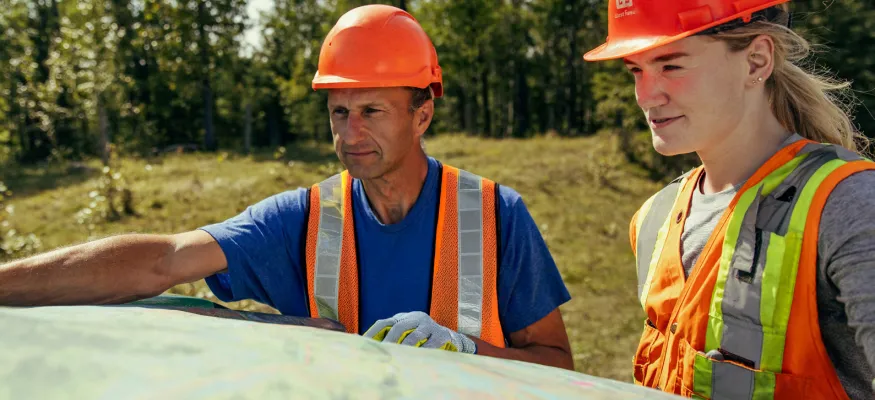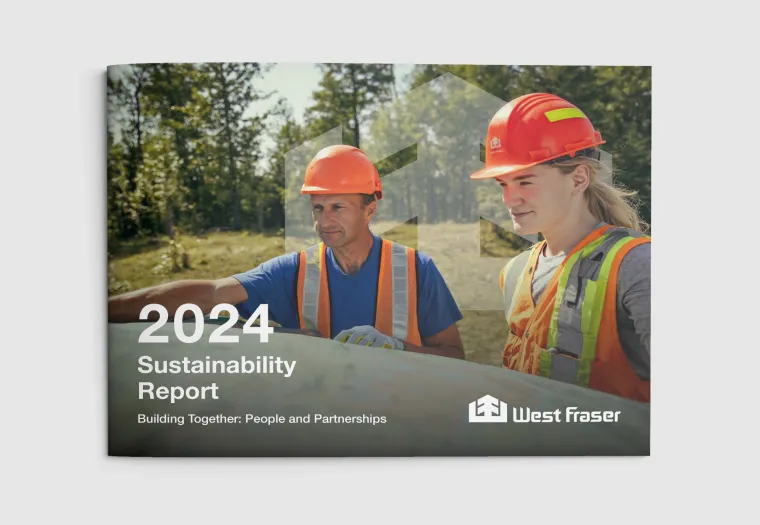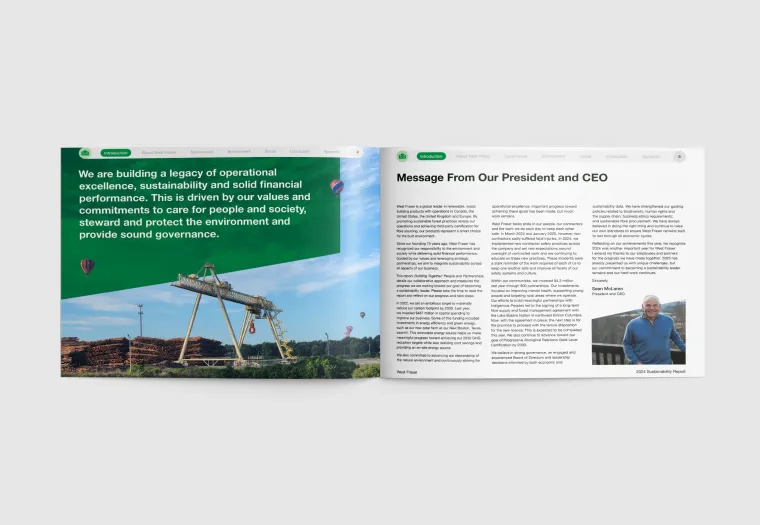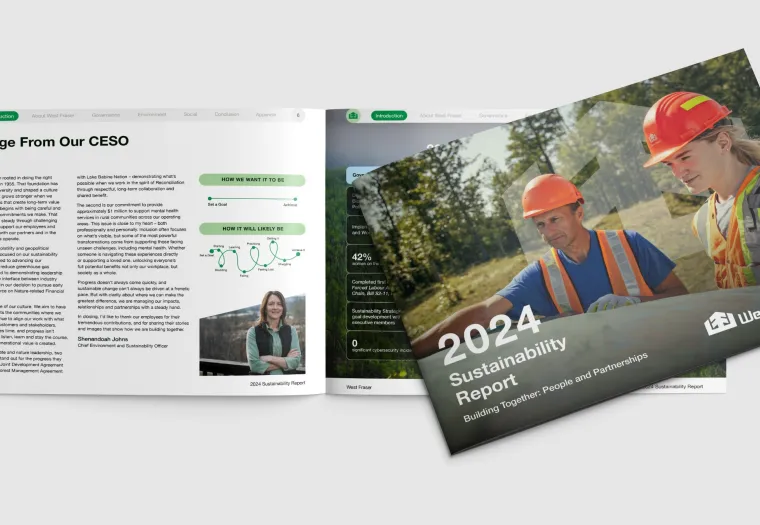
Sustainability Reporting
Driving Progress
Our annual sustainability reports provide a comprehensive look at West Fraser’s performance in environmental, governance and social topic areas.
These include climate action, sustainable forestry, safety, Indigenous relations and more. Together, these reports—along with our reporting data and indices, ratings and rankings—show West Fraser’s path toward achieving our goal of being a sustainability leader.
million seedlings planted in Canada
YoY decrease in Scope 1 and 2 emissions
reduction in Scope 3 emissions
million invested in our communities
million invested in Mental Health
women on the Board of Directors
student placements, internships and apprenticeships
contractor safety trainees

West Fraser's 2024 Sustainability Report shares the continued evolution of our culture of sustainability.
We are building a legacy of operational excellence, sustainability and solid financial performance. This is driven by our values and commitment to care for people and society, steward and protect the environment and provide sound governance.

Since our founding 70 years ago, West Fraser has recognized our responsibility to the environment and society while delivering solid financial performance. Guided by our values and leveraging strategic partnerships, we aim to integrate sustainability across all aspects of our business.
This report, Building Together: People and Partnerships, details our collaborative approach and measures the progress we are making toward our goal of becoming a sustainability leader. Please take the time to read the report and reflect on our progress and next steps.

Our business has been rooted in doing the right thing since we began in 1955. That foundation has helped us navigate adversity and shaped a culture of resilience, one that grows stronger when we prioritize the disciplines that create long-term value for the company. This begins with being careful and intentional about the commitments we make. That clarity helps us remain steady through challenging times, enabling us to support our employees and build economic value with our partners and in the communities where we operate.

Download the full appendix for detailed GRI, SASB, and TCFD data tables, along with important cautionary statements supporting our sustainability disclosures.

Our previous reports are archived and are for reference or recordkeeping purposes only.